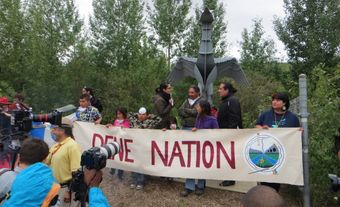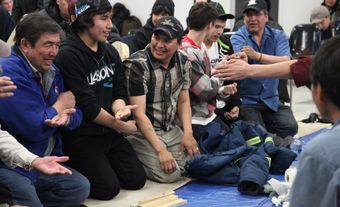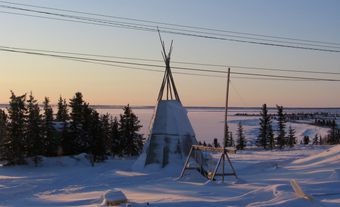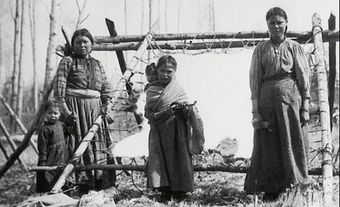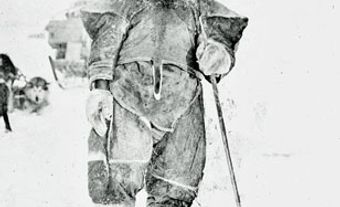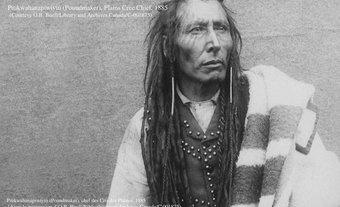K’asho Got’ine are Dene traditionally occupying territory along the lower Mackenzie River valley of the Northwest Territories. Fort Good Hope and Déline (Fort Franklin) are now the major population centres of the K'asho Got'ine.
Pre-Colonial History
The K'asho Got'ine (Hare) are Dene whose ancestors lived in small, nomadic groups along the lower Mackenzie River valley of the Northwest Territories. The K'asho Got'ine had a precolonial population of 700-800. They pursued a hunting, fishing and gathering way of life centered on caribou, moose, freshwater fish, small game and berries, and lived in a territory from the Yukon border to forested zones west and northwest of Great Bear Lake. (See also Indigenous Territory.)
Several cultural features distinguished the K'asho Got'ine from neighbouring Gwich'in, Shita Got'ine, Slavey and Tlicho. They spoke their own Dene dialect and were noted for their relations with other Indigenous groups.
The name Hare, given by early Europeans, reflected their heavy dependence on the snowshoe hare for food and clothing. Since the hare goes through a population cycle every 7 to 10 years, the Indigenous population periodically experienced devastating starvation.
They had a rich oral tradition, and participated in drum dances and competitive gambling. Their communities were held together by kinship ties on both the father's and the mother's side. Outstanding hunters and shamans had considerable influence in K’asho Got’ine society. The K'asho Got'ine were governed by an ethic that balanced sharing and interdependence with autonomy and freedom. There was no concept of individual ownership of land, and people were free to hunt and fish in any part of their territory.
European Contact
First recorded contact with Europeans came during the explorations of Alexander Mackenzie in 1789. Early in the 19th century the K'asho Got'ine were drawn into the fur trade as forts spread north along the Mackenzie River. Their trading activities were centered on Fort Good Hope and also on Forts Norman and Franklin. A Roman Catholic mission was established in 1859 at Fort Good Hope, and the people's conversion to Christianity began. For much of the 19th century and until the decline of fur prices after the Second World War, most of the K'asho Got'ine combined trapping with sustenance hunting.
Treaty 11 and Land Claims
Treaty 11, signed by K'asho Got'ine and the federal government in 1921, has been a source of controversy: according to the treaty's terms, the K’asho Got’ine retained the right to hunt, fish and trap in their traditional lands, but present-day First Nations leaders argue that they did not give up title to their ancestral territory. (See also Numbered Treaties).
Through land claims negotiations with the federal government during the 1970s, 1980s and 1990s, the K'asho Got'ine – along with other Dene groups – have sought to re-establish greater sovereignty over portions of their territory.
Contemporary Life
In the early 1960s, K’asho Got’ine established a new village at Colville Lake, 142 km northeast of Fort Good Hope, in an area rich with game and fish. Fort Good Hope and Déline (Fort Franklin) are the major population centres of the K'asho Got'ine. As of November 2024, the registered population of Fort Good Hope was 1,006 people and Deline First Nation was 1,131 people.

 Share on Facebook
Share on Facebook Share on X
Share on X Share by Email
Share by Email Share on Google Classroom
Share on Google Classroom




